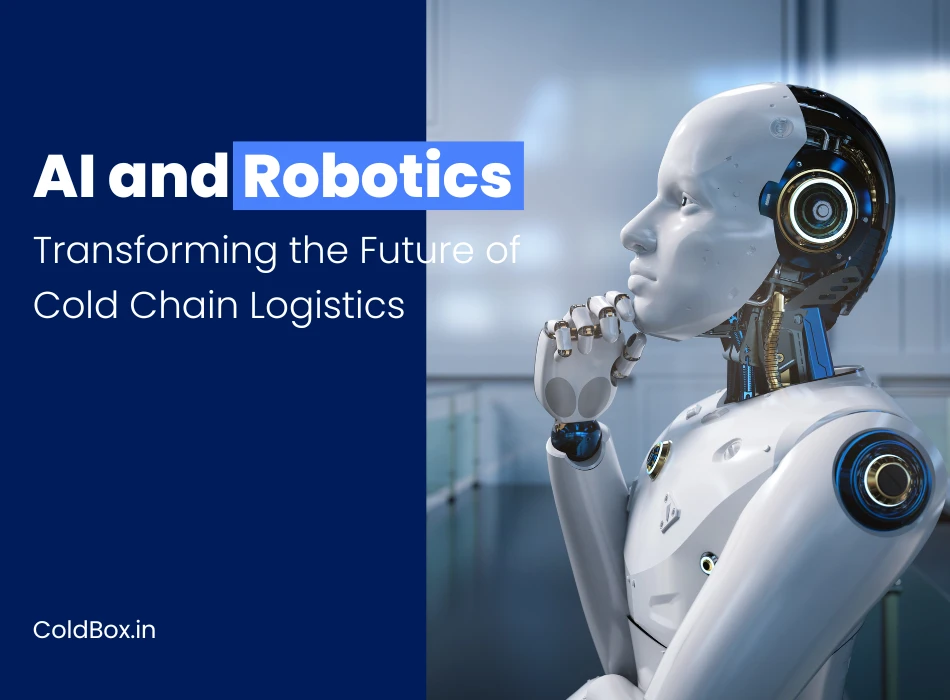AI and Robotics: Transforming the Future of Cold Chain Logistics
Explore how AI and robotics are transforming cold chain logistics by enhancing efficiency, improving temperature monitoring, optimizing routes, and reducing costs.

The integration of artificial intelligence (AI) and robotics into cold chain logistics is revolutionizing the industry, enhancing efficiency, reliability, and sustainability. As the demand for temperature-sensitive products continues to grow, innovative technologies are being deployed to optimize operations, reduce costs, and ensure compliance with stringent regulations.
This blog will explore how AI and robotics are transforming cold chain logistics, highlighting key innovations, benefits, and recent developments.
Key Innovations in AI and Robotics
Predictive Analytics for Maintenance
AI algorithms analyze historical data and real-time conditions to forecast potential issues such as equipment failures or delays. For instance, IBM recently unveiled its AI-powered logistics platform that enhances route planning and automates real-time decision-making. This proactive approach allows companies to manage their cold chain operations more effectively by anticipating problems before they arise.
Route Optimization
AI-driven route optimization tools enable logistics providers to plan the most efficient delivery routes while considering factors like traffic patterns and weather forecasts. This not only reduces operational costs but also ensures timely delivery of perishable goods, meeting the growing demands of consumers.
Robotics in Warehousing
Robotics technology is increasingly being used in warehouses to automate tasks such as picking, packing, and sorting temperature-sensitive products. This automation enhances operational efficiency and reduces human error, ensuring that products are handled with care throughout the supply chain.
Benefits of AI and Robotics in Cold Chain Logistics
Enhanced Temperature Monitoring
AI-powered systems facilitate continuous monitoring of temperatures within refrigerated units. By integrating IoT sensors with machine learning algorithms, companies can receive real-time alerts about temperature deviations, allowing for immediate corrective actions to prevent spoilage.
Improved Inventory Management
AI solutions provide real-time insights into inventory levels, helping businesses avoid stockouts or overages. By analyzing demand patterns and predicting future needs, companies can optimize their inventory management processes and reduce waste.
Cost Savings
The implementation of AI and robotics can lead to significant cost reductions by streamlining operations and minimizing energy consumption. For example, advanced refrigeration systems equipped with AI can optimize energy use based on real-time data, resulting in lower operational costs.
Recent Developments in the Industry
Recent news highlights the ongoing advancements in AI and robotics within cold chain logistics:
- Thermo King, a leader in transport temperature control solutions, introduced a new line of smart refrigeration units equipped with advanced IoT sensors and real-time analytics in July 2024. These units provide continuous temperature monitoring and alerts to mitigate spoilage risks effectively.
- DHL Global Forwardinghas implemented IoT-enabled temperature monitoring systems across its transportation network, enhancing visibility and control over cold chain operations. This initiative minimizes the risk of temperature excursions and strengthens DHL’s position as a trusted provider of cold chain solutions.
- Lineage Logisticshas expanded its refrigerated warehouse capacity to meet growing demand, particularly in food and pharmaceuticals. This expansion allows Lineage to offer comprehensive services while leveraging AI technologies for enhanced operational efficiency.
Challenges Ahead
While the integration of AI and robotics presents numerous benefits, challenges remain:
- High Initial Investment: Implementing advanced technologies requires significant upfront investment, which can be a barrier for smaller companies.
- Data Security Concerns: As reliance on digital technologies increases, so does the risk of cyber threats that could compromise sensitive data.
- Skill Gaps: The successful implementation of AI and robotics requires skilled personnel who can manage these technologies effectively.
Conclusion
AI and robotics are poised to transform cold chain logistics by enhancing efficiency, improving product quality, and reducing costs. As businesses increasingly adopt these technologies, they will be better equipped to meet the demands of a rapidly evolving market characterized by rising consumer expectations for fresh and high-quality products.
The future of cold chain logistics looks promising as companies leverage AI-driven innovations to optimize their operations while ensuring compliance with regulatory standards.